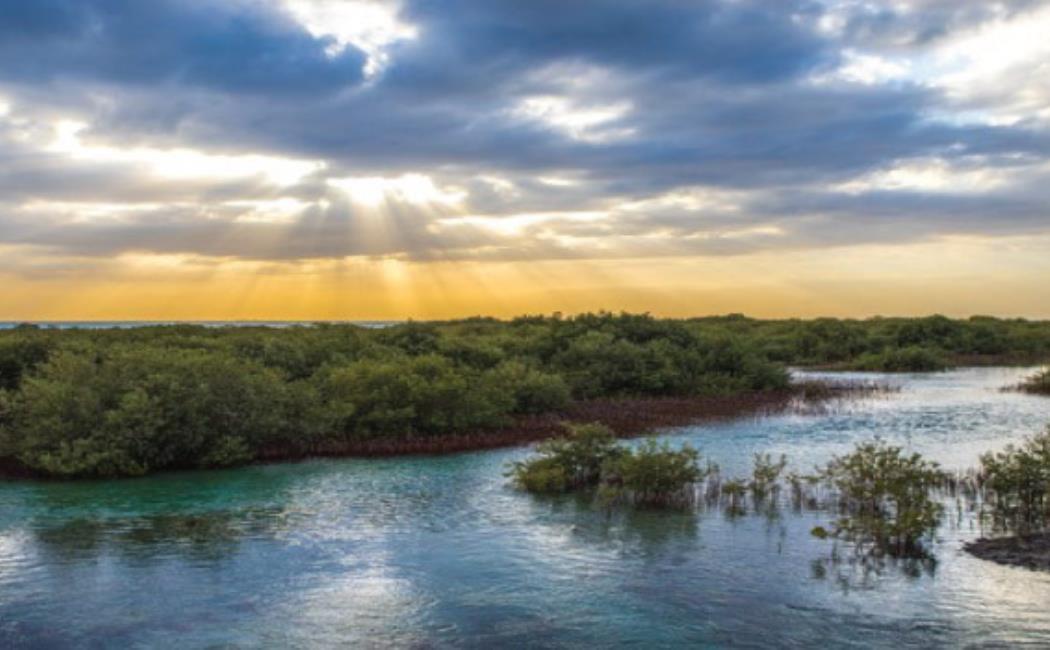
Mangroves lock away carbon
13 December, 2020
High levels of dissolved calcium carbonate present in their bedrock indicate that Red Sea mangroves are capable of removing more carbon than previously thought, KAUST researchers have found. The study's findings highlight the need to consider calcium carbonate dissolution in mangroves growing on carbonate platforms as an important carbon storage mechanism.
Blue carbon ecosystems, such as mangroves, saltmarshes and seagrass beds, sequester large amounts of carbon dioxide (CO2) from the atmosphere in the form of organic carbon locked in their soils. In the Red Sea and much of the tropics, mangroves grow on calcium carbonate sediments formed by shells and skeletons of marine organisms dating back to the Pleistocene, about 100,000 years ago. The dissolution of calcium carbonate in seawater is a source of total alkalinity, which increases the ocean’s capacity to store CO2 from the atmosphere.
Click here to read the full story
Image: Red Sea mangroves represent an effective natural way to remove carbon dioxide from the atmosphere.
© 2020 Morgan Bennett Smith